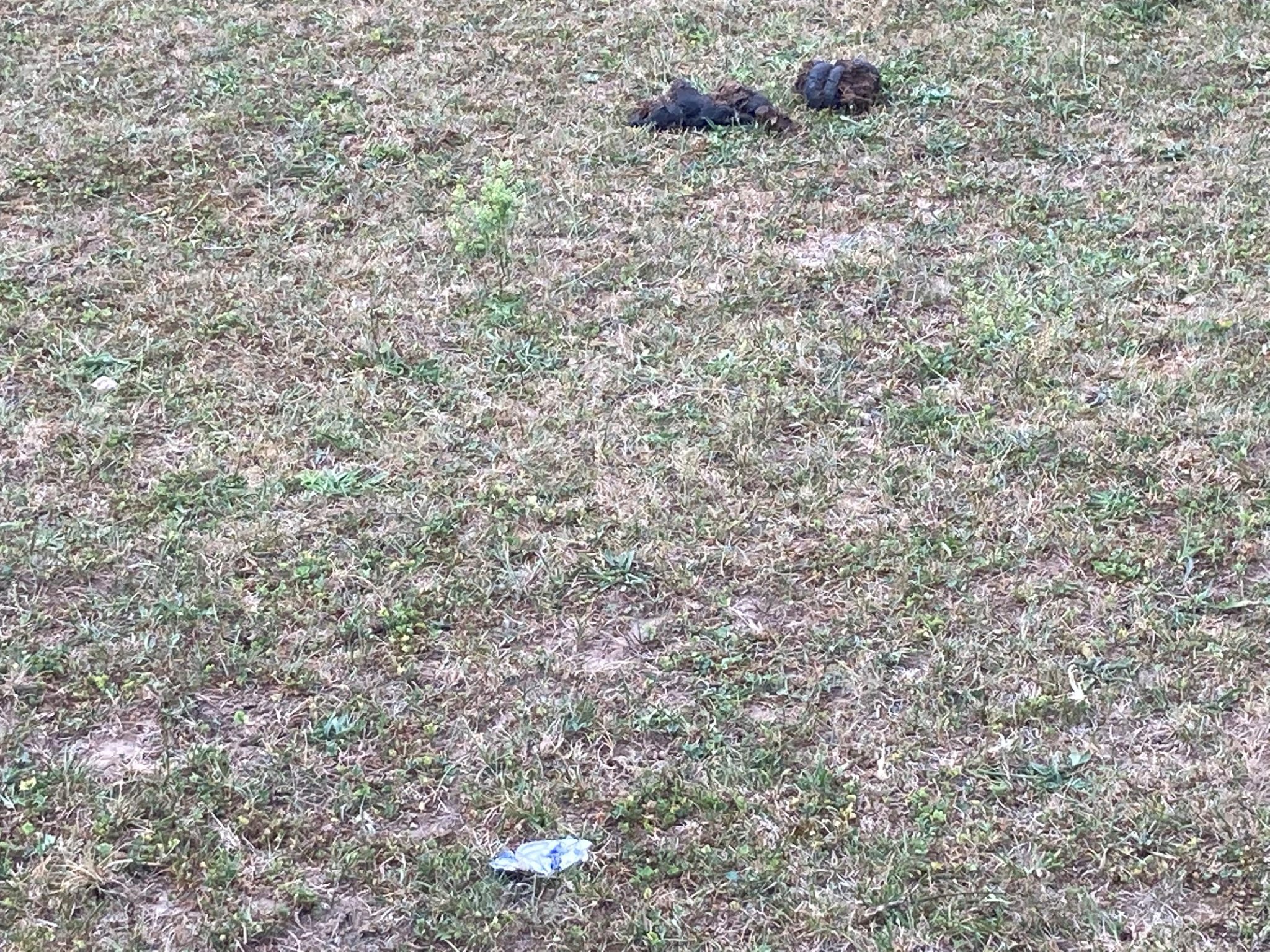This past week was a return to high summer temperature and lack of moisture. My observations the past several days in the West Lafayette area as a travel about are that cool-season grass pastures are in a dormant state and that overgrazed pastures are easily found. A few more days of grazing may happen when the last blades of grass and legumes remain, but the long term consequences are not good for the wellbeing of the forages in the pasture. Meristems are where cell initiation, continued division, and elongation occurs. When close grazing happens, meristems cannot produce what would be the next growth to graze. In time, less productive plants that can take close grazing because the meristems are at or slightly below the soil surface and, therefore, remain ungrazed will increase and troublesome weeds may begin to appear and become dominant, too.

If plants could cry out, they would yell “Stop” when overgrazing begins to occur. Note the visible manure in the upper center and the crushed aluminum can in the lower center of the photograph. If the pasture was properly grazed, the manure and aluminum can would not have been visible at the distance that the photograph was taken.
(Picture Credit: Keith Johnson)
Here are some considerations to help stretch the forage supply that remains in a pasture, protect future plant productivity, and improve the wellbeing and productivity of livestock, too.
- Employ rotational stocking.
- Provide clean, cool water to reduce heat stress and maintain herd and flock health.
- Monitor the body condition of livestock as an indicator of nutritional status.
- Creep feed calves for near normal weaning weights.
- Early wean late winter- and spring-born calves to take pressure off both cows and pastures.
- Pregnancy check and market cull cows earlier than normal to reduce feed needs.
- Determine if poisonous plants are in overgrazed pastures and hay fields, and determine best control options.
- Inventory hay and other feed resources and determine whether future purchases will be needed.
- Analyze hay and silage for nutrient profiles to help determine what supplemental feeds will provide a balanced ration.
- Use alternative high fiber byproducts feeds such as soybean hulls and corn gluten feed to supplement and stretch forage supplies.
- Limit hay access time to stretch forage supplies.
- Limit feed a nutrient dense diet to stretch forage supplies.
- Graze corn residues and stockpiled forages to reduce harvested feed needs.
- If drought-stressed corn has poor grain set, consider using it as silage or green chop. Check for nitrate level before feeding happens. Contact your insurance agent before a harvest occurs.
Listen carefully. Your forages may be crying out “Don’t overgraze if you want to see us next year!”.


